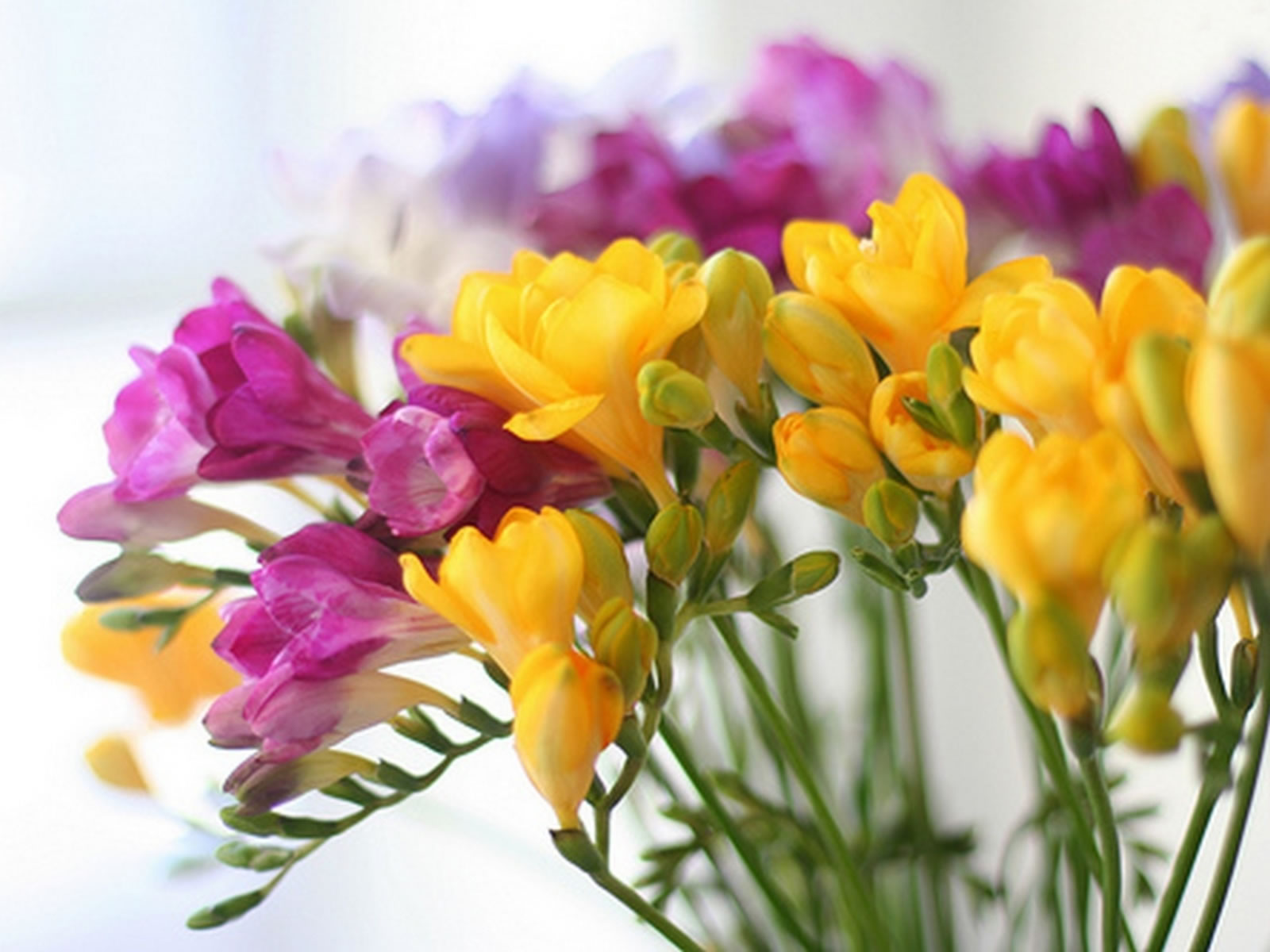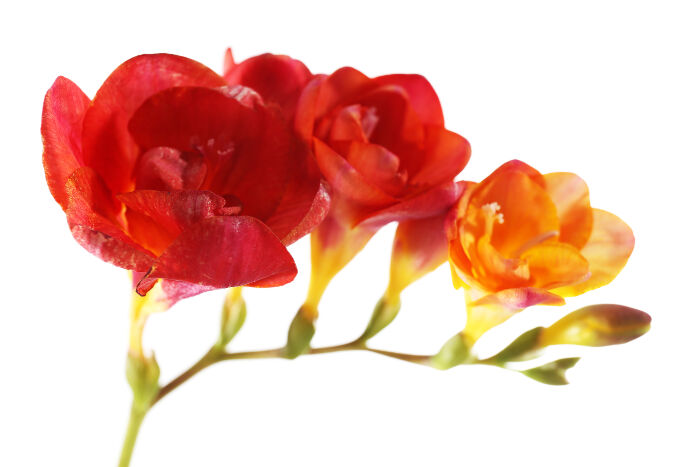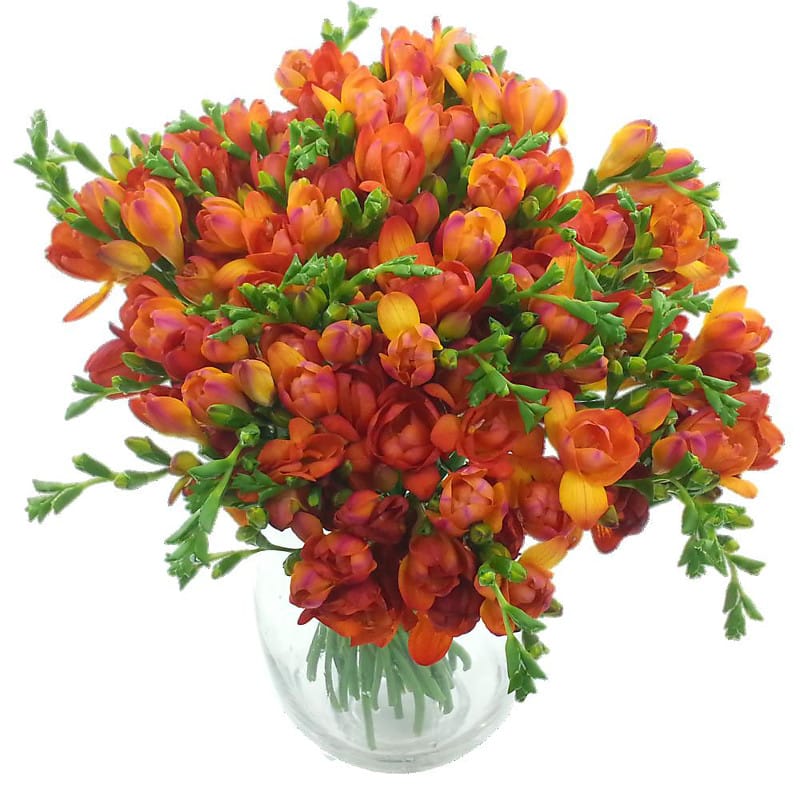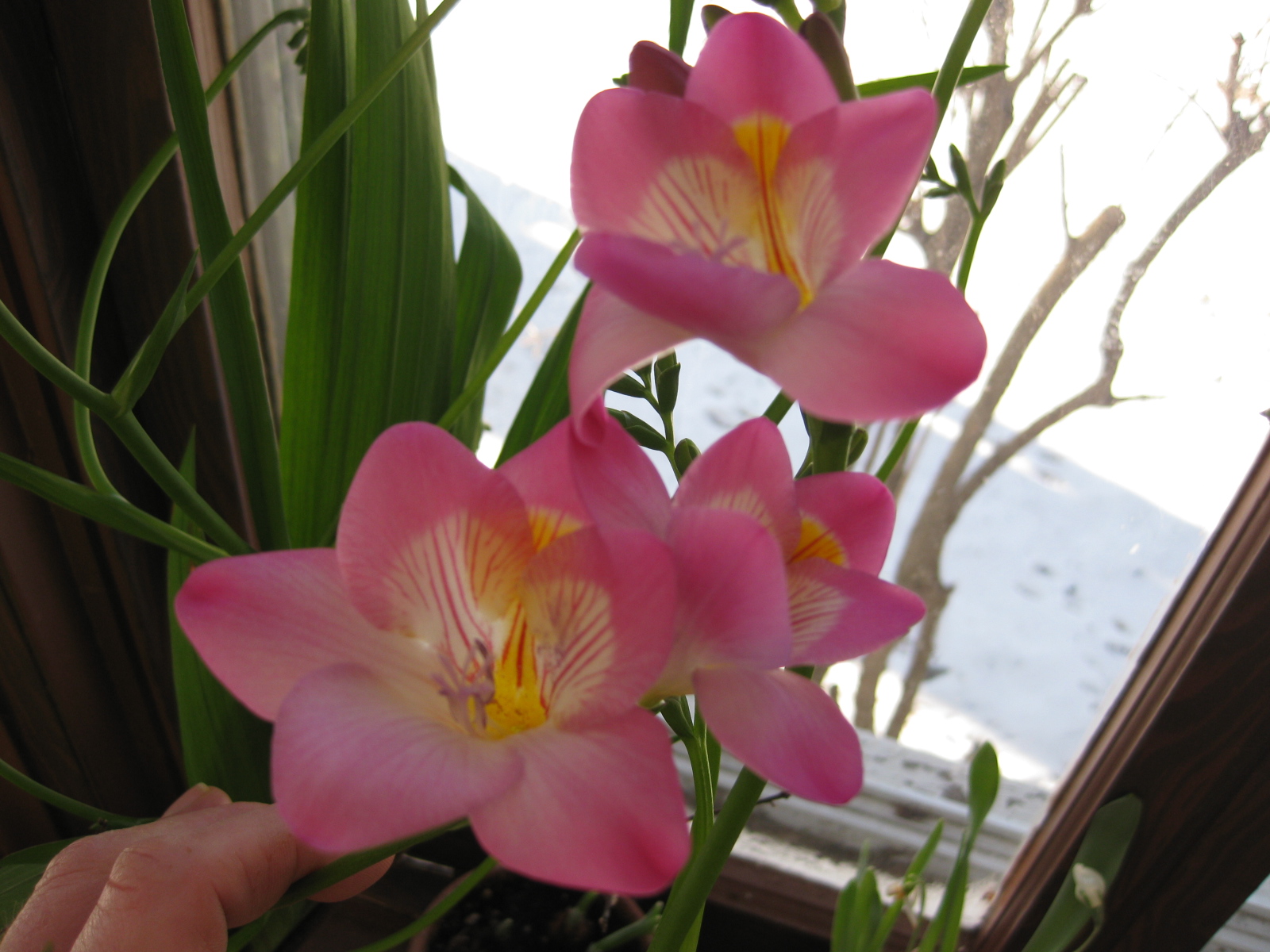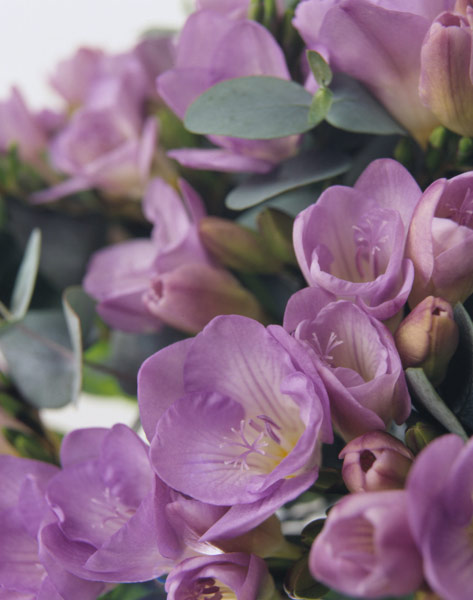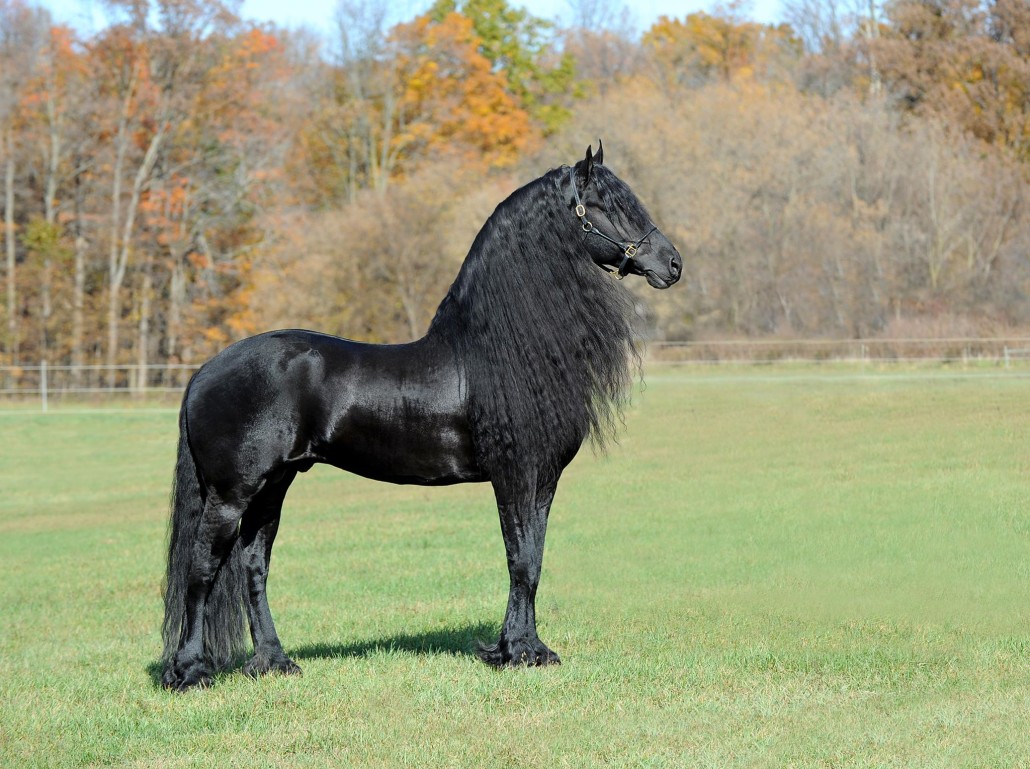
Freesia is a genus of herbaceous perennial flowering vegetation in the family Iridaceae, first referred to as a genus in 1866 by Chr. Fr. Echlon (1795-1868) and called after German botanist and doctor Friedrich Freese (1794-1878). It really is indigenous to the eastern side of southern Africa, from Kenya south to South Africa, most varieties being within Cape Provinces. Varieties of the previous genus Anomatheca are actually contained in Freesia. The plants commonly known as "freesias", with fragrant funnel-shaped plants, are cultivated hybrids of a number of Freesia types. Some other varieties are also expanded as ornamental plants.
They are simply herbaceous plant life which expand from a conical corm 1-2.5 cm diameter, which delivers up a tuft of small leaves 10-30 cm long, and a sparsely branched stem 10-40 cm extra tall bearing a few leaves and a loose one-sided spike of bouquets with six tepals. Many species have fragrant narrowly funnel-shaped flowers, although those previously positioned in the genus Anomatheca, such as F. laxa, have smooth flowers. Freesias are used as food plants by the larvae of some Lepidoptera types including Large Yellowish Underwing.
CULTIVATION AND USES
The crops usually called "freesias" derive from crosses manufactured in the 19th hundred years between F. refracta and F. leichtlinii. Numerous cultivars have been bred from these varieties and the pink- and yellow-flowered types of F. corymbosa. Modern tetraploid cultivars have blossoms which range from white to yellowish, green, red and blue-mauve. They may be mostly cultivated appropriately in holland by about 80 growers.[3] Freesias can be conveniently increased from seed. Because of the specific and desirable scent, they are generally used in palm ointments, shampoos, candles, etc.[citation needed], however, the bouquets are mainly used in wedding bouquets. They could be planted in the fall in USDA Hardiness Zones 9-10 (i.e. where in fact the temperature does not land below about -7 ?C (20 ?F)), and in the spring and coil in Areas 4-8.
Freesia laxa (previously called Lapeirousia laxa or Anomatheca cruenta) is one of the other varieties of the genus which is commonly cultivated. Smaller than the scented freesia cultivars, they have flat somewhat than cup-shaped blooms. Extensive 'forcing' of the bulb occurs in two Moon Bay in California where several growers chill the light bulbs in proprietary solutions to satisfy cool dormancy which results in development of buds inside a predicted quantity of weeks - often 5 weeks at 55 ?F (13 ?C).
Herbaceous vegetation (in botanical use frequently simply herbal products) are plant life which have no persistent woody stem above earth. Herbaceous plants may be annuals, biennials or perennials. Total annual herbaceous plants perish completely at the end of the growing season or when they have got flowered and fruited, and they then expand again from seed. Herbaceous perennial and biennial crops may have stems that die by the end of the growing season, but parts of the plant survive under or close to the ground from season to season (for biennials, until the next growing season, when they rose and perish). New progress produces from living tissues remaining on or under the bottom, including root base, a caudex (a thickened part of the stem at ground level) or numerous kinds of underground stems, such as bulbs, corms, stolons, rhizomes and tubers. Types of herbaceous biennials include carrot, parsnip and common ragwort; herbaceous perennials include potato, peony, hosta, mint, most ferns & most grasses. By contrast, non-herbaceous perennial plants are woody plant life which have stems above surface that continue to be alive through the dormant season and develop shoots the next yr from the above-ground parts - included in these are trees and shrubs, shrubs and vines.
Freesia The Flowers Avenue

Purple Star Freesia :: Beautiful Flower Pictures Blog
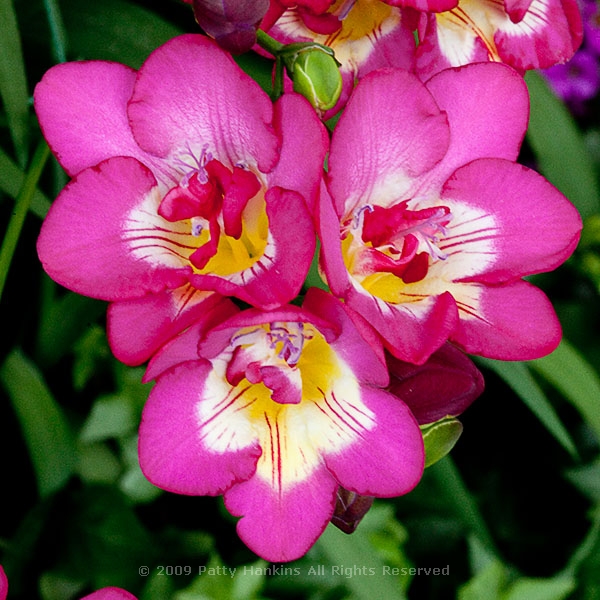
Assorted Freesia Freesia Flowers and Fillers Flowers by category
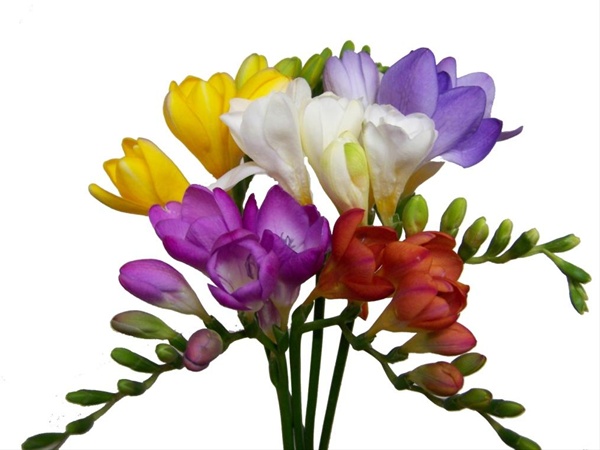
freesia ~ Freesias ~ Pinterest



